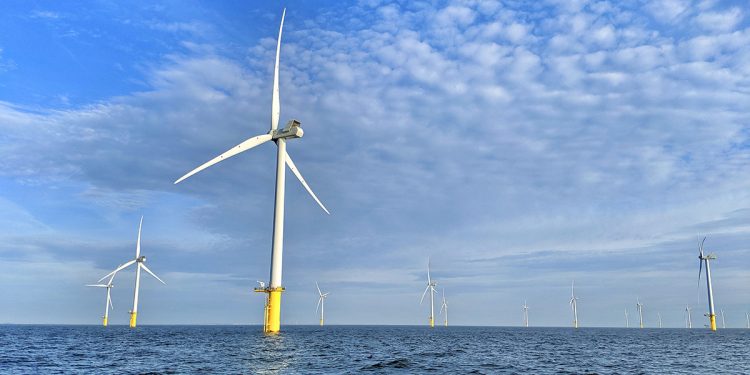New Delhi: While India is set to miss its first national offshore wind target, global offshore wind capacity will surge to over 234 GW by 2030 from 29.1 GW at the end of 2019, led by exponential growth in the Asia-Pacific region and continued strong growth in Europe, a new report by the Global Wind Energy Council (GWEC) said Wednesday.
In India nearly 70 GW potential has been earmarked for offshore wind development.
However, the tender for the first 1 GW project in the Gulf of Khambhat in Gujarat has been delayed and attention has now turned to the stronger wind resource area off Tamil Nadu.
India has a national target to have 5 GW installed capacity by 2022 and 30 GW by 2030.
The GWEC in the second edition of its Global Offshore Wind Report finds that 2019 was the best year on record for offshore wind, with 6.1 GW of new capacity added globally, bringing total global cumulative installations to 29.1 GW.
China remains in the number one spot for the second year in a row for new installations, installing a record 2.4 GW, followed by the UK at 1.8 GW and Germany at 1.1 GW.
While Europe continues to be the leading region for offshore wind, countries in the Asia-Pacific region, such as Taiwan, Vietnam, Japan, and South Korea, as well as the US market are quickly picking up pace and will be regions of significant growth in the next decade.
The report finds that offshore wind in India is expected to compete with cheaper land-based renewables and it has stalled the market.
The GWEC Market Intelligence forecasts that through 2030, more than 205 GW of new offshore wind capacity will be added globally, including at least 6.2 GW of floating offshore wind.
This represents a 15 GW increase from the forecasts in GWEC Market Intelligence’s pre-COVID forecast, demonstrating the resilience of the sector to play a major role in powering both the energy transition and a green recovery.
GWEC CEO Ben Backwell said: “Offshore wind is truly going global, as governments around the world recognise the role that the technology can play in starting post-COVID economic recovery through large-scale investment, creating jobs and bringing economic development to coastal communities.
“Over the coming decade we will see emerging offshore markets like Japan, Korea and Vietnam move to full deployment, and see the first offshore turbines installed in a number of new countries in Asia, Latin America and Africa.”
The report shows that 900,000 jobs will be created in the offshore sector over the next decade — and this number can only increase if policymakers put in place recovery strategies that can further accelerate the growth of the sector.
The global offshore market has grown on an average by 24 per cent each year since 2013.
Europe remains the largest market for offshore wind at the end of 2019, making up 75 per cent of the total global installations.
Europe will continue to be a leader in offshore wind, with an ambitious 450 GW goal by 2050 driven by installations in the UK, the Netherlands, France, Germany, Denmark and Poland, with several other EU markets posting double-digit volumes.
Taiwan is set to become the second-largest offshore wind market in Asia after Mainland China, with a goal of 5.5 GW by 2025 and an additional 10 GW by 2035.
(IANS)






































